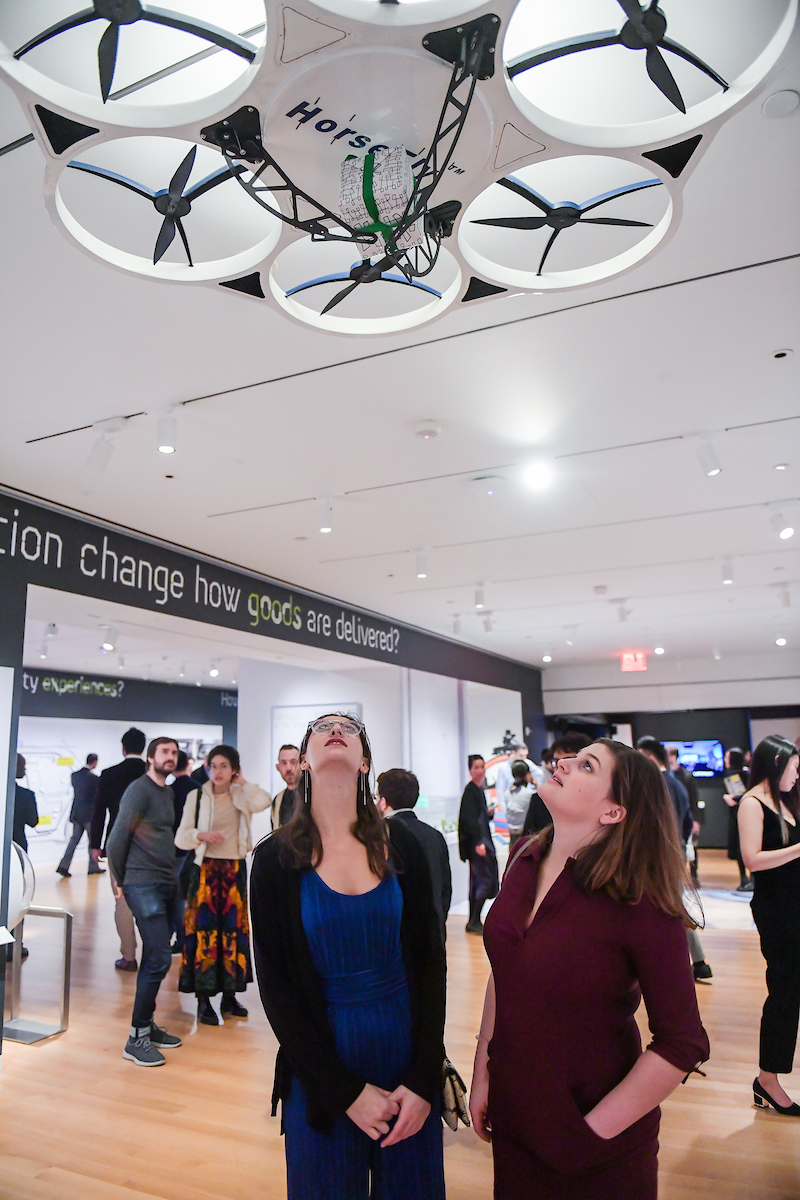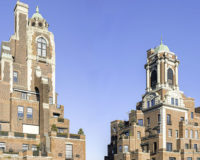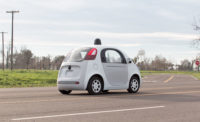The Road Ahead: Reimagining Mobility, a new exhibit at the Cooper Hewitt, Smithsonian Design Museum in New York, is a meticulously curated survey of the state of the street and where it might be headed. “We’re trying to bring together many of the different conversations and topics being addressed by disparate industries and designers, so that citizens can wrap their heads around what’s happening and have a say in it,” says Cara McCarty, curatorial director at Cooper Hewitt and co-organizer of The Road Ahead. “We are at an inflection point, not unlike the turn of the 20th century, when there was a rapid shift from horse-and-buggy to the automobile.”

Photo by Scott Rudd Associates, © Cooper Hewitt
That radical position guides the show, presenting new and conceptual technology—including delivery drones and wireless electric charging pads mounted on vehicles and within roadways—alongside more comprehensive proposals for urban mobility and safer, more efficient 21st-century municipal plans. And if there’s an overarching narrative among the 40 projects on display (some of which exist and are being tested across the country, and others of which are speculative), it’s that autonomous vehicles (AVs) will fundamentally reboot our cities.
Take, for instance, Solar Roadways—modular panels that can be embedded in streets or placed on top of existing surfaces to create energy-generating, electric-vehicle-powering roads. The glass hexagons contain solar cells and microprocessors, to fuel and communicate with AVs, as well as LEDs, to display lane markers and signage. The system, installed at the Cooper Hewitt, is being piloted in Idaho, and engineering tests for three U.S. Department of Transportation contracts have just been completed. “Covering every paved surface in the U.S. would produce three times the energy our country uses,” Solar Roadways cofounder Julie Brusaw tells RECORD. “Clean, renewable energy.”
If Solar Roadways’ plan is ever implemented on a large scale, it would be the single largest advancement in street construction since the development of blacktop. But it’s only one way technology would disrupt urban infrastructure; street and garage parking is also in the crosshairs. At present, there are some 500 million parking spaces in the United States. What happens to all that space if, as one scenario predicts, AVs are constantly circulating, picking up and dropping off passengers, or traveling to and from centralized facilities?
At Gensler, architects imagine adaptively reusing parking-garage structures in the speculative project MOD, on display at Cooper Hewitt. They envision converting standard aboveground parking garages into new mixed-use spaces that could accommodate prefabricated office, retail, and homeless-housing modules. “What was once a dark garage that sat idle for several hours of the day is transformed into a dynamic hub of activity for the future of cities,” Gensler co-CEO Andy Cohen tells RECORD. FXCollaborative takes another approach with Public Square, a system of 8-foot by 8-foot plug-and-play modules that can be configured for countless civic needs, from sidewalk cafés and playgrounds to gardens and groves of trees, giving streets in a city of AVs back to pedestrians, while potentially creating precious new green space. (The concept won New York’s Driverless Future Challenge in 2017.) “There are 24 square miles of on-street parking in New York City,” says Jack Robbins, principal and director of urban design at FXCollaborative. “If you took 5 percent of that, just one out of every 20 spaces, and converted them to Public Square, that’s the equivalent of adding another Central Park to the city.”
Taken together, these three projects share a similar vision for the future of urban spaces. But The Road Ahead is a “buffet” of ideas, as McCarty puts it, and visitors can easily load up with dozens of scenarios and solutions—which can be dizzying when considering the pace, breadth, and scope of such a momentous shift in how we live, work, and travel. But rather than feeling overwhelmed, it’s worth keeping Jane Jacobs in mind: “What a wonderful challenge there is!” from her seminal 1958 essay “Downtown is for People,” about urban redevelopment. “Designing a dream city is easy; rebuilding a living one takes imagination.”
As The Road Ahead (running through March 31, 2019) makes plain, no path is inevitable—yet—and it will take active participation from all of us to ensure that urban areas are once again for people. Challenge accepted.









Post a comment to this article
Report Abusive Comment